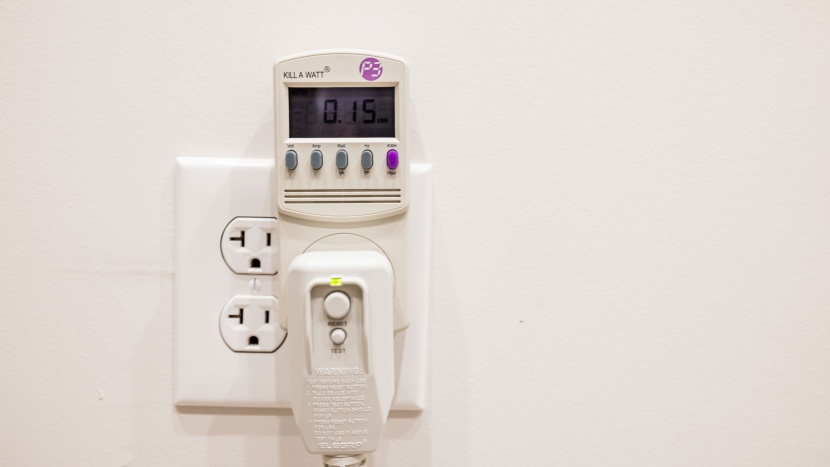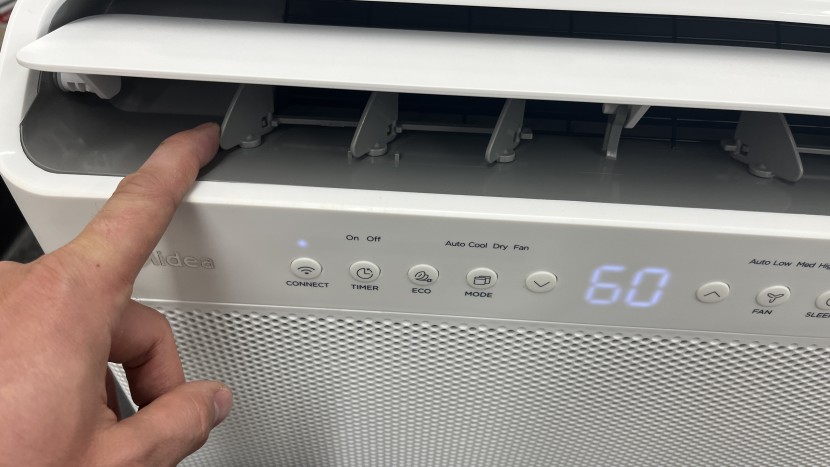To test window air conditioner units, our team of testers starts by researching hundreds of models available on the market today before narrowing a selection to the most promising units. We then purchase those top candidates to put through stringent side-by-side testing, evaluating a key number of features and performance metrics in order to determine which models are worthy of awards and our team's recommendations. If you are interested in how the specific products we tested performed, check out our window air conditioner review, or if you need a buyer's guide on what to look out for when selecting a window air conditioner, then check out our buying advice guide.
Cooling Power
Our first and most critical test metric, cooling, evaluates each AC unit's ability to lower the temperature of our control room in a 60-minute timeframe. As cooling is the primary purpose of a window air conditioner unit, our team weighted the metric to account for 30 percent of the total score for each product tested.
Our test room was set up with an office projector that simulated a constant heat source in the room and helped to return the room and stabilize within 84-85 degrees Fahrenheit between each test. After a 5-10 minute wait period to ensure the temperature has settled and is stable, we started running each window AC unit on the coldest setting and highest fan speed. Our testers started the stopwatch for the one-hour tests as soon as the compressors started.
Energy Consumption
Our energy consumption metric accounts for 25 percent of the overall score for each window air conditioner unit. Using a watt meter, our test team measured the kilowatt-hours of energy consumed by each unit while operating at the highest power and highest fan speed settings for one hour.
Typical electric motors require a higher current to energize the field, which causes them to rotate from a stop and consume more power. In contrast, a motor that is already spinning uses less power. Since inverter technology manages the motor speed versus cycling a motor on and off, it is much more energy efficient.
Our testing considered the technology used by each unit, in addition to recording actual power consumption, and helps to balance scoring between more powerful 12,000 BTU units that could understandably consume more power than a 5000 BTU unit.
The power consumption data in our testing is derived from our cooling power tests. Power measurements are taken with a watt meter plugged into each unit.
Noise
In our noise testing, we quantified the loudness of the models, assigning this metric a weight of 20 percent in the overall score for each model. This emphasis on noise is crucial for obvious reasons. Loud window AC units can disrupt sleep, focus, and relaxation. While a loud unit may be great at cooling a nursery, bedroom, or office, it can keep you and your kids from sleeping or make it difficult to have a productive work meeting.
Units that do not utilize the more energy-efficient inverter technology function by cycling on and off at their full duty cycle. Beyond the noise that the compressor motors and fans make while running, a starting and stopping motor can be especially abrupt and distracting.
To score the noise generated by each model, we used objective data as well as more subjective evaluations. Our team recorded the sound generated by each model with an SPL(sound pressure level) meter, which utilizes a logarithmic algorithm starting at 0 with imperceivable sounds and expresses data in decibels. This gave our team objective data about the noise level generated.
We also evaluated the sounds from a human perspective, discussing and rating the sounds and their unique traits. Some models generated undesirable pitches versus a more tolerable humming, earning them fewer points. Other models made more jarring sounds as motors and compressors cycled on and off and scored less points than models with smoother, less disruptive inverter technology and speed-controlled motors.
Convenience
In our convenience metric, which comprises 15% of the overall score for each model, we interrogated all the features and functions of each unit. We specifically focused on air direction adjustments, temperature/display settings, different modes offered, remote control operation, Wi-Fi connectivity, apps, timers, and child locks.
As they have the most impact on user convenience, we most heavily weighted Wi-Fi connectivity and apps, followed by air direction adjustments, remote controls, and timers. All other sub-metrics were given less weight for a lower level of significance.
Installation
Our last metric considers the simplicity and ease of installation of each unit. As a task that doesn't need to be performed often, and normally only one time, it received a weighting of only 10% percent in the overall score for each model.
Our team installed each unit into our test room window and evaluated instructions, the number of steps required to complete the task, and their respective complexities. Our team also considered the weight of each model, as many would be considered too heavy for a single person to lift and require a friend for assistance during installation.
Conclusion
This guide clarifies how we sorted, selected, and tested the top window air conditioner units. If you would like to read more about the products we selected and tested, check out our comprehensive review of window air conditioners, or if you simply need a cheat sheet on what to look for in a model, then we recommend reading our buying advice article.





